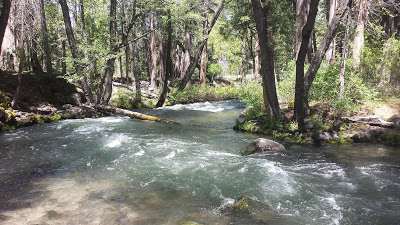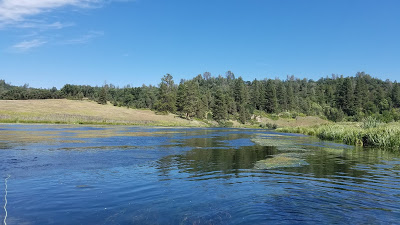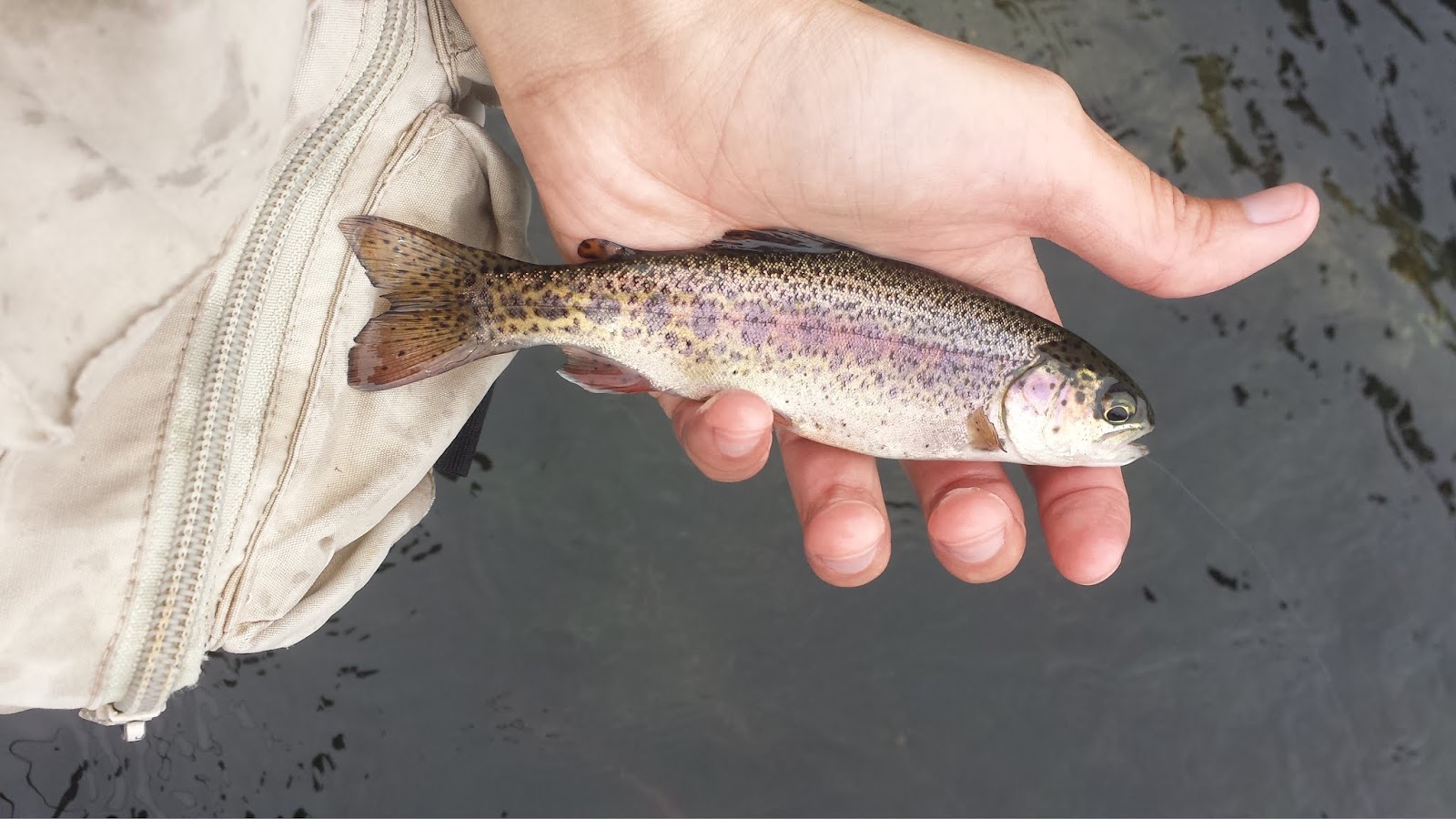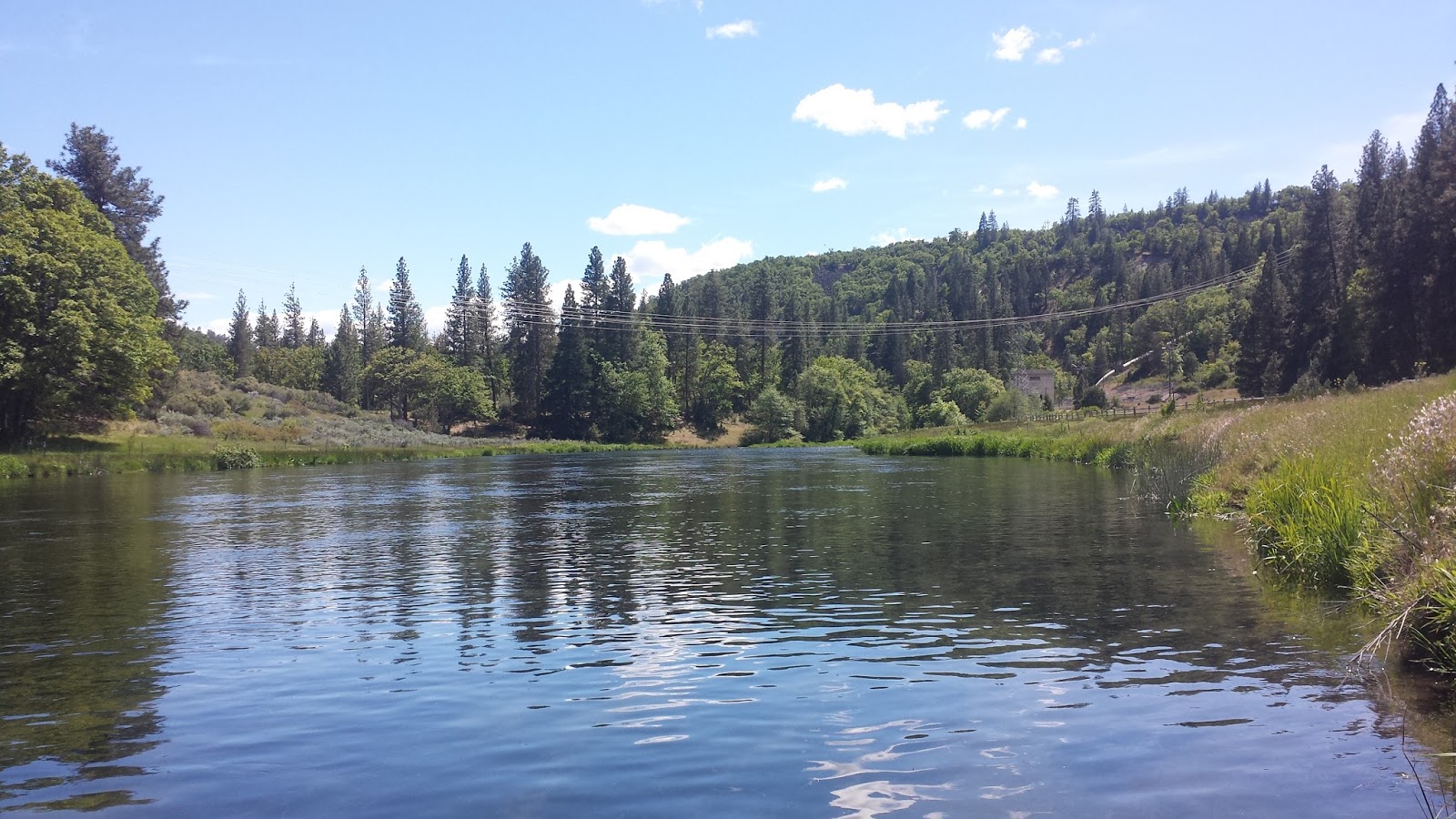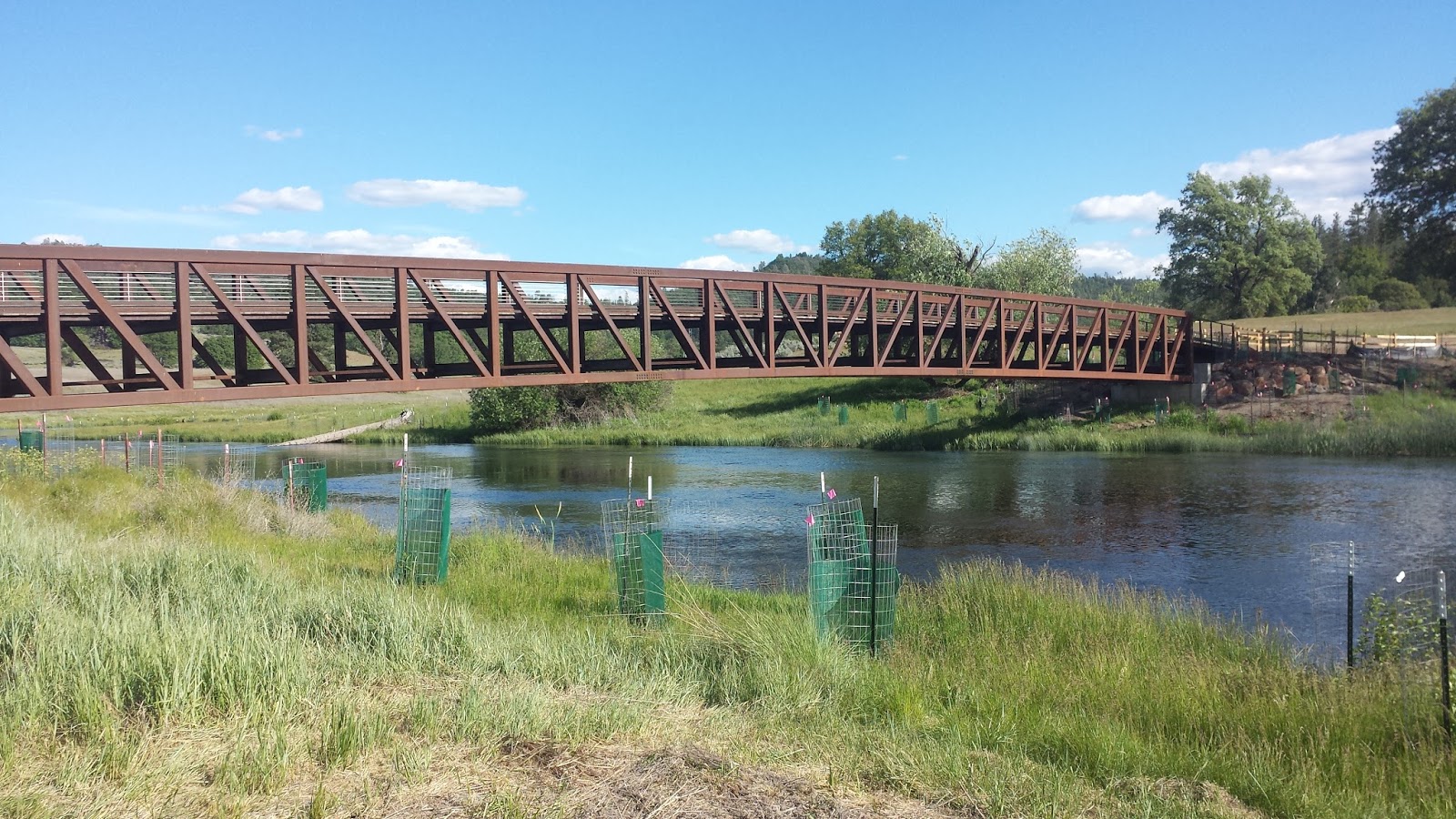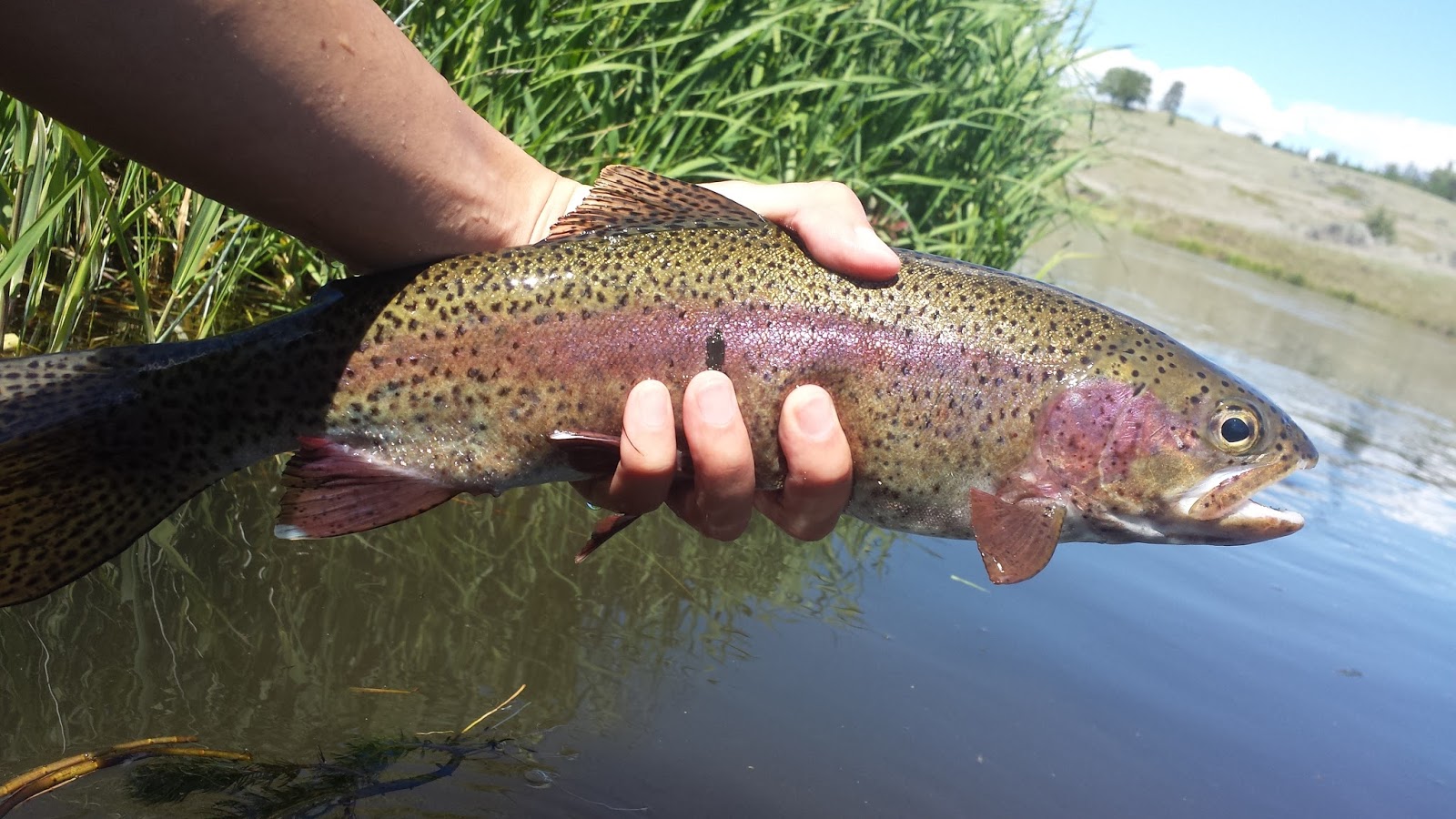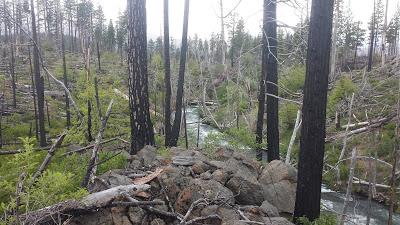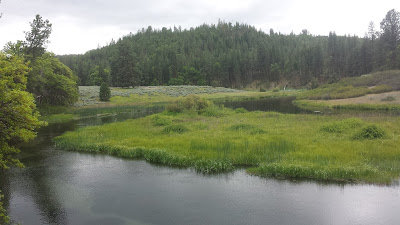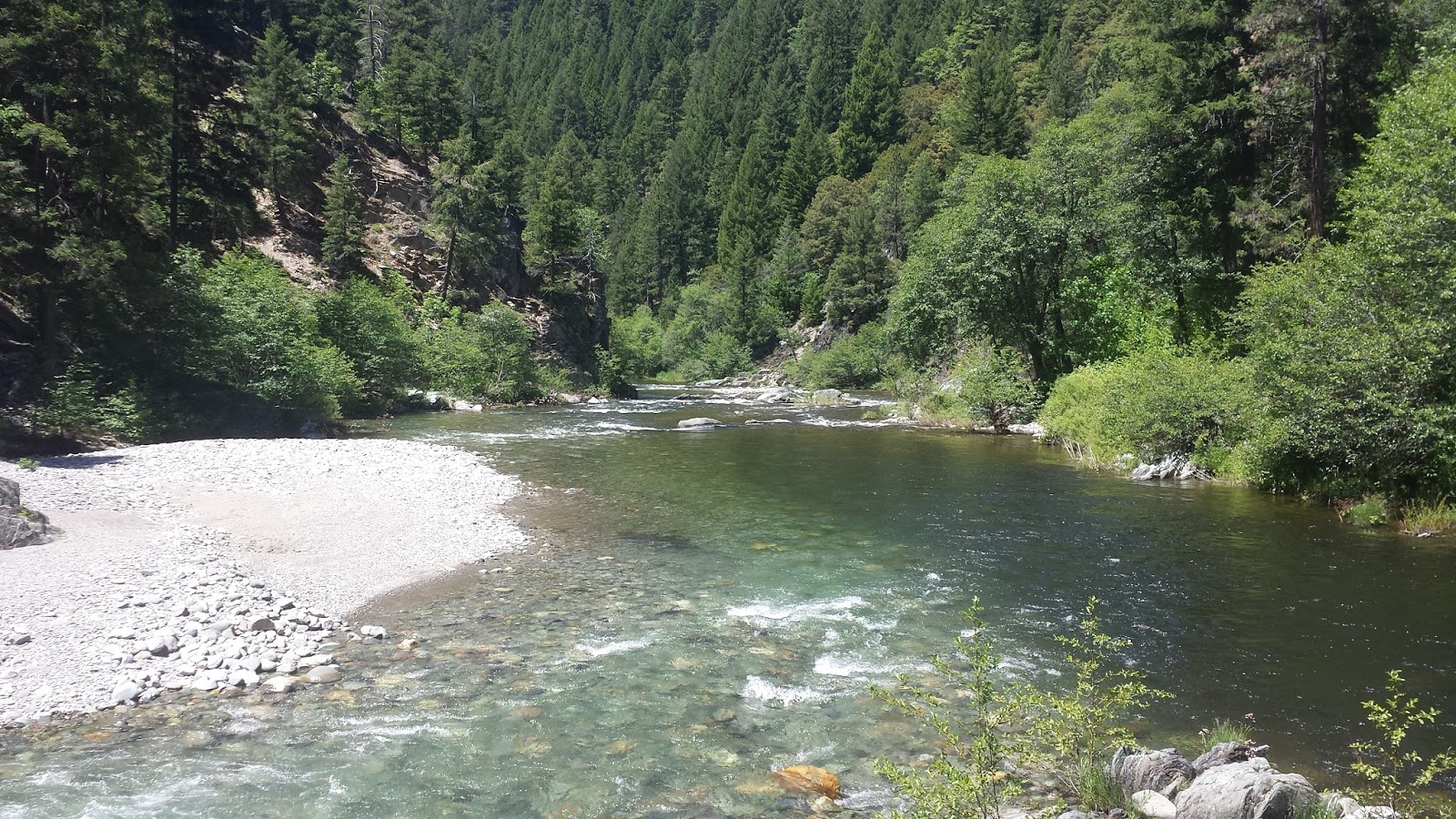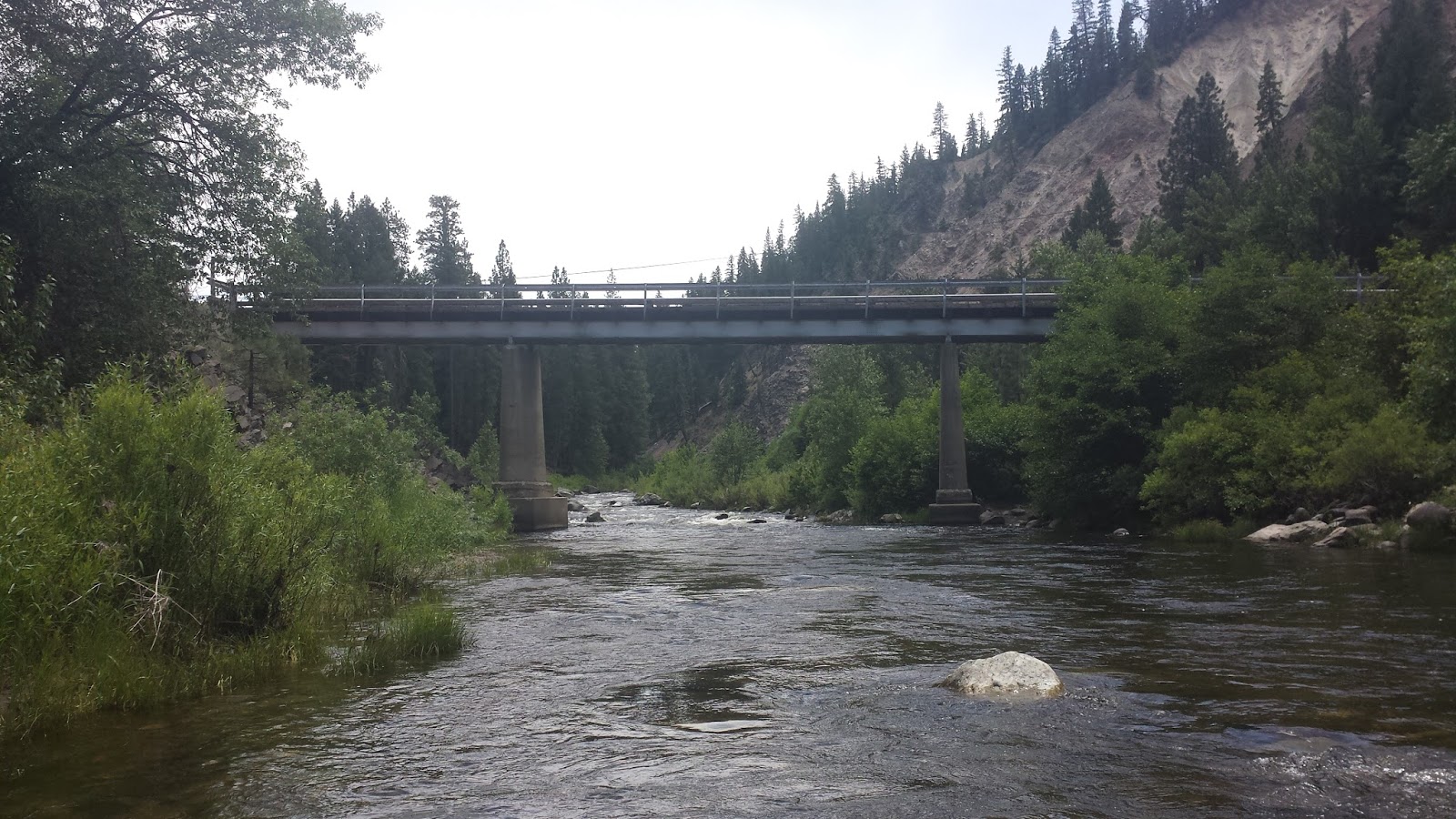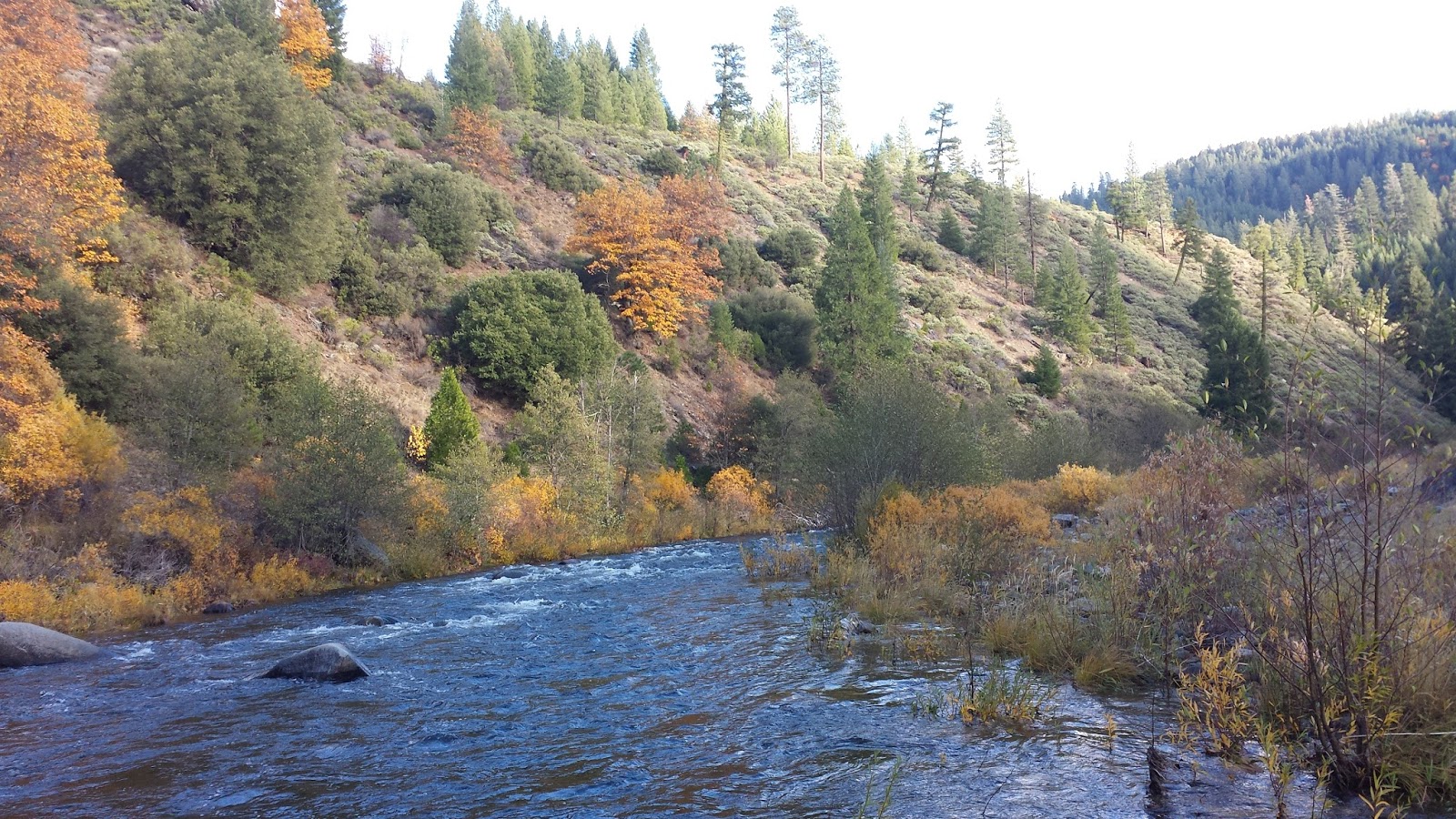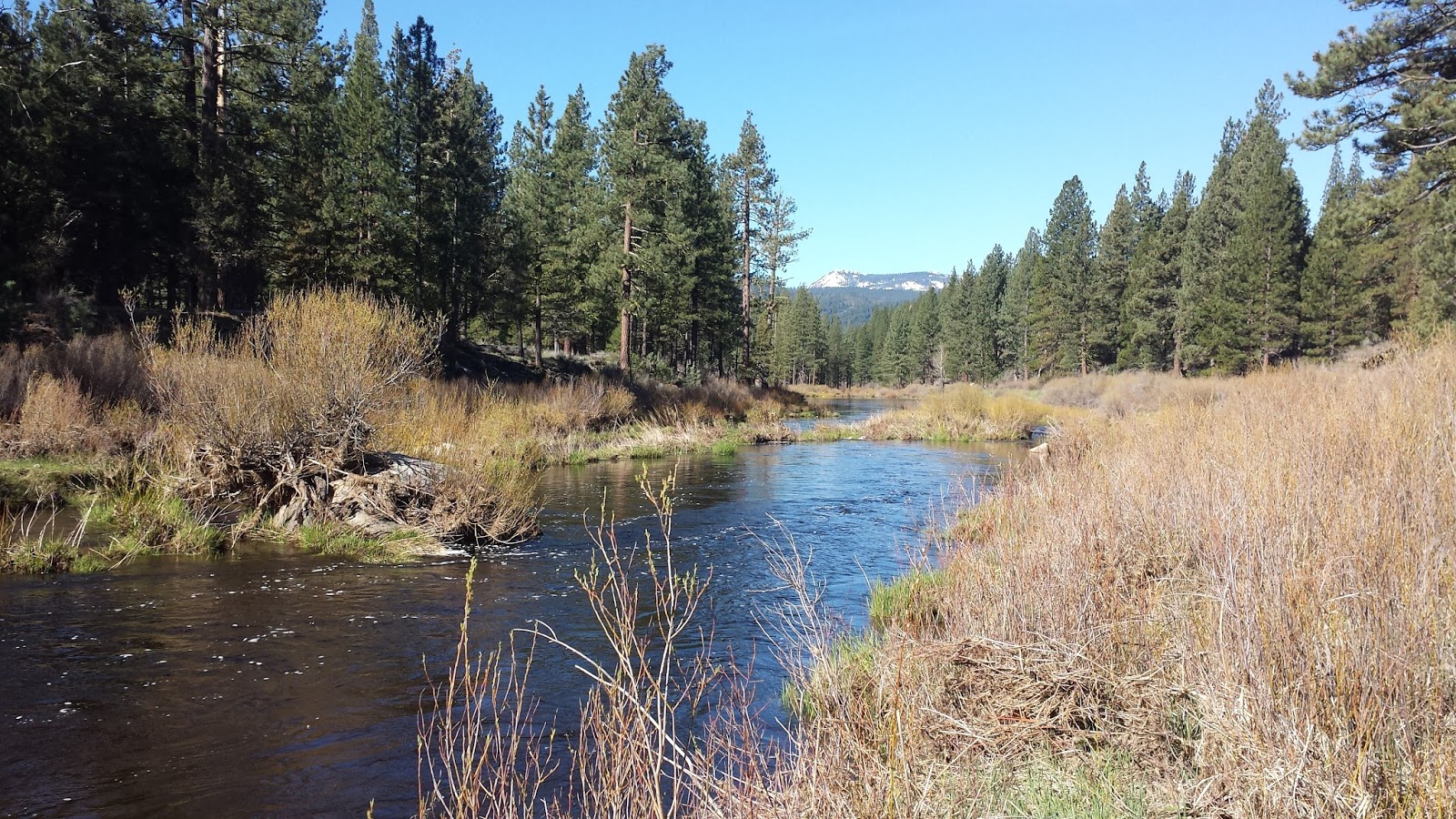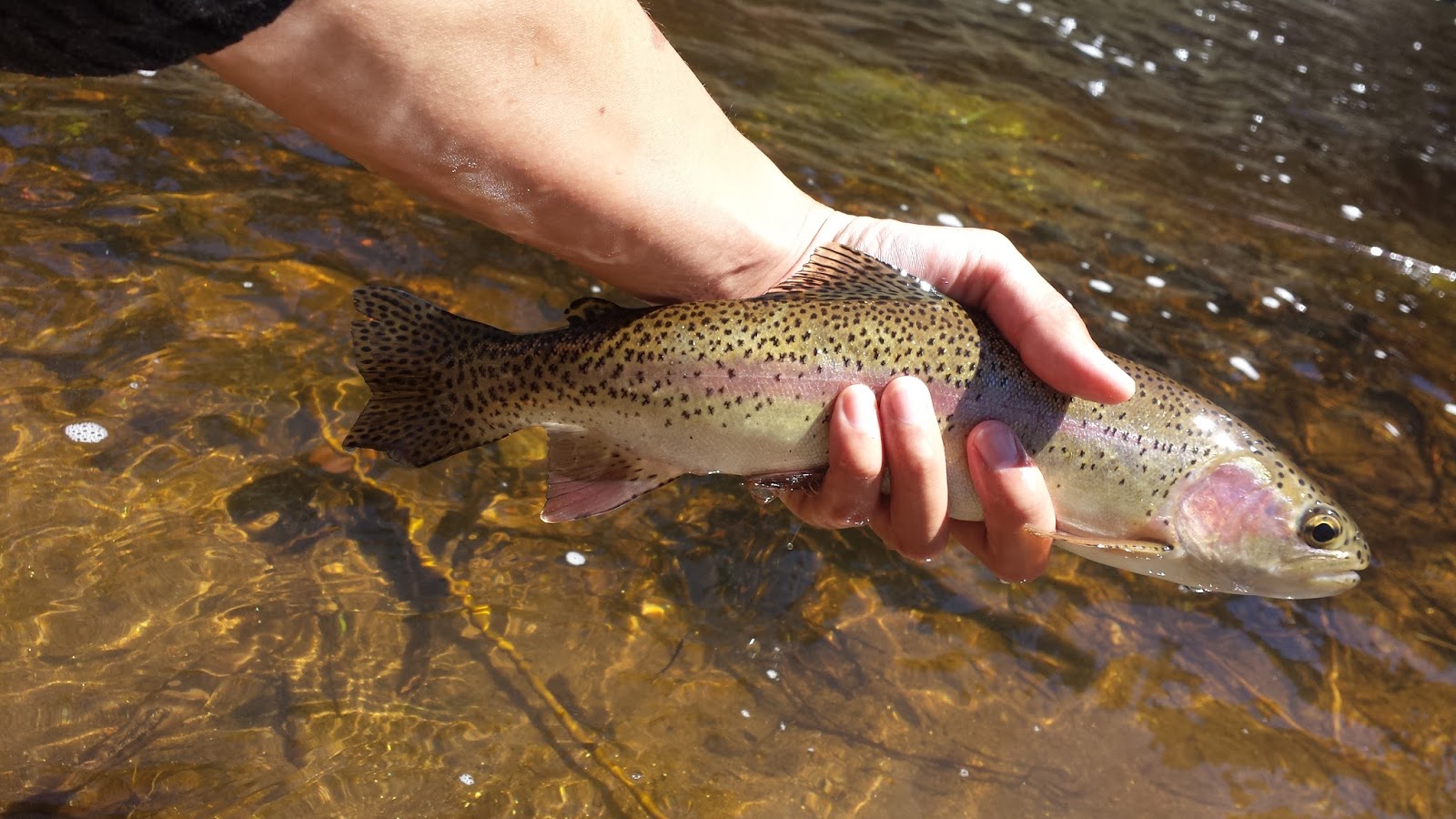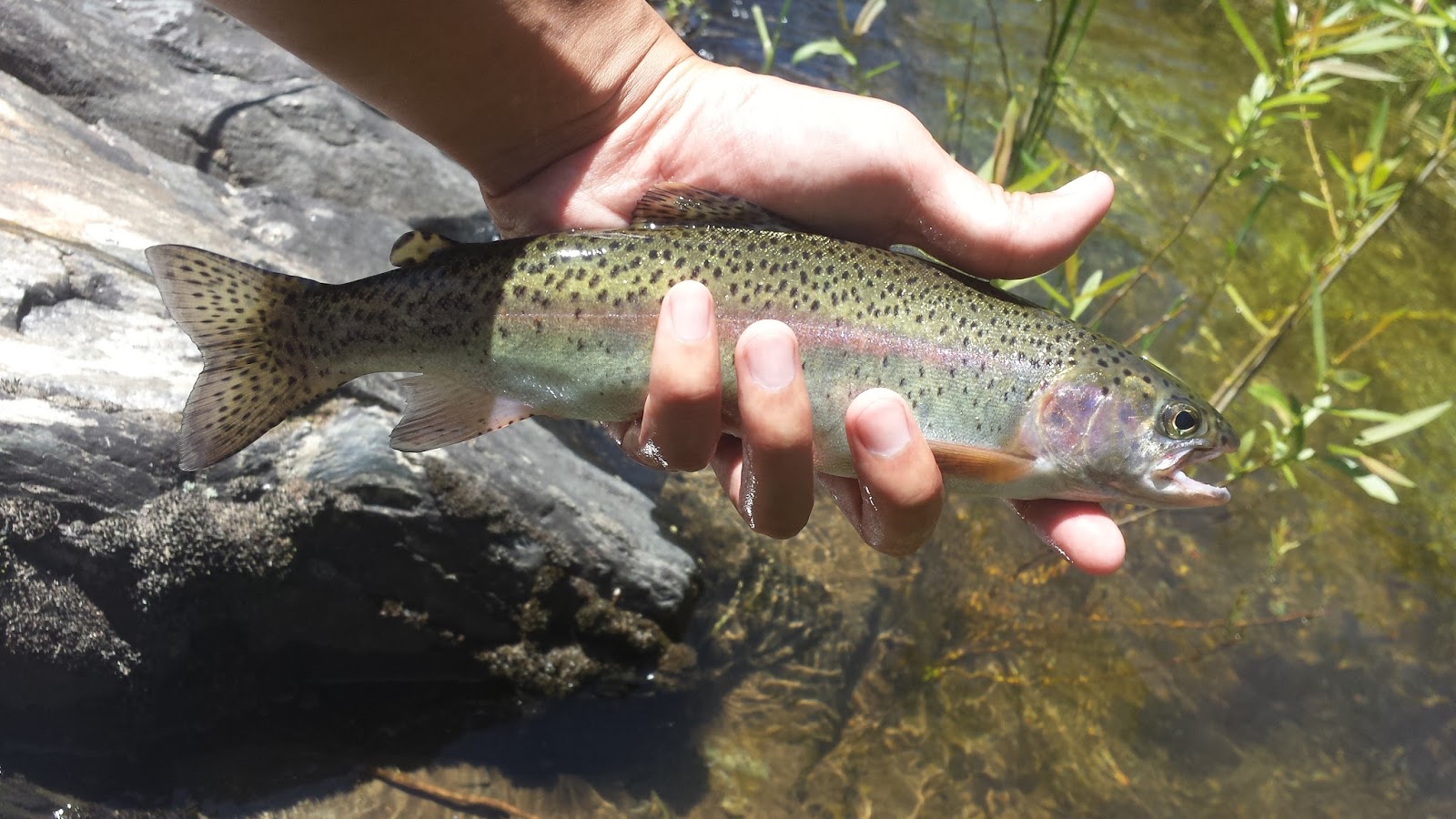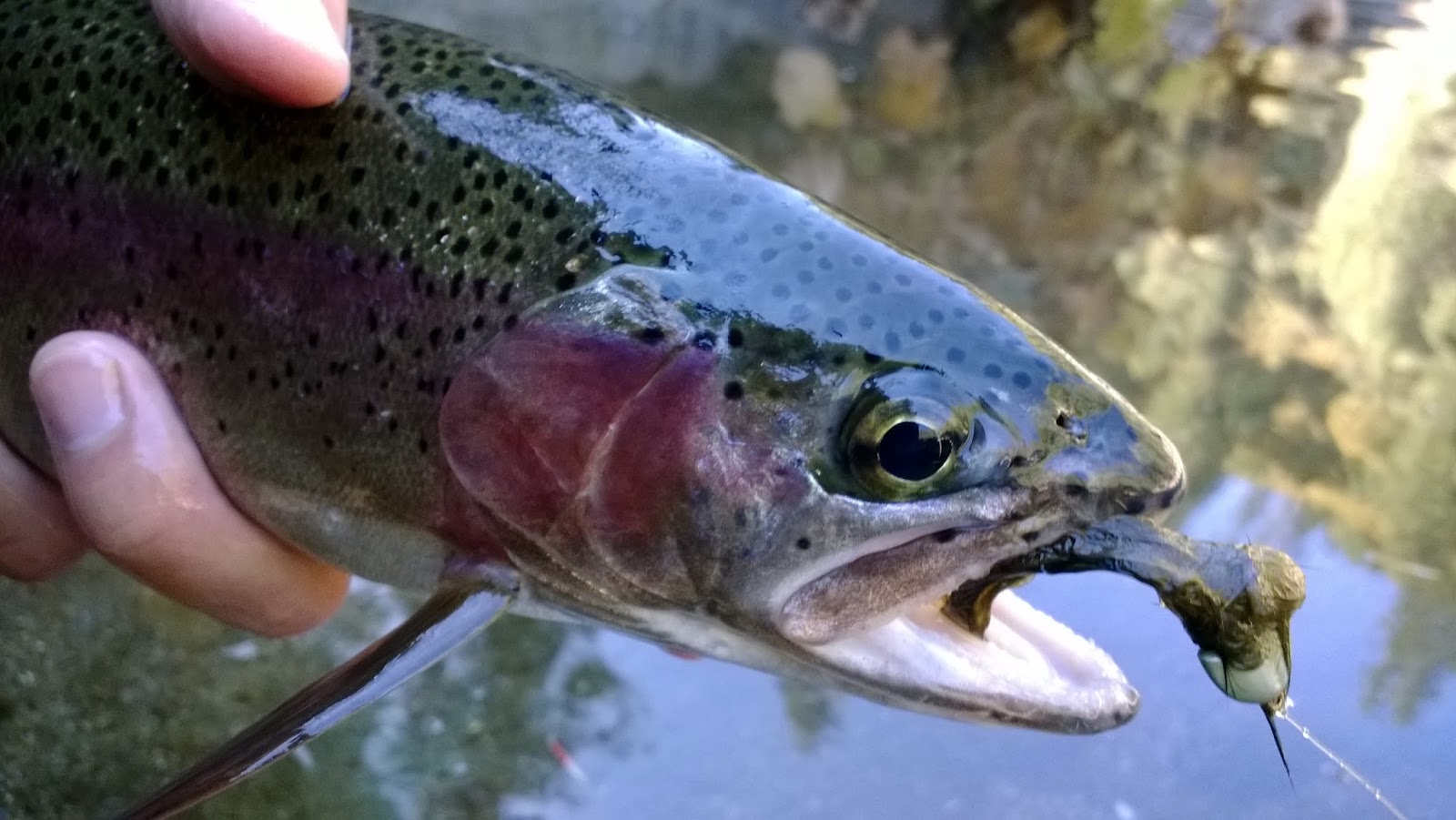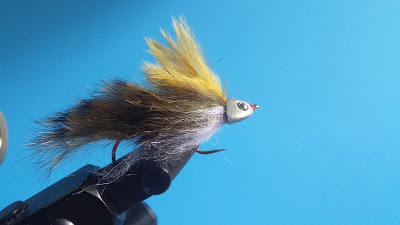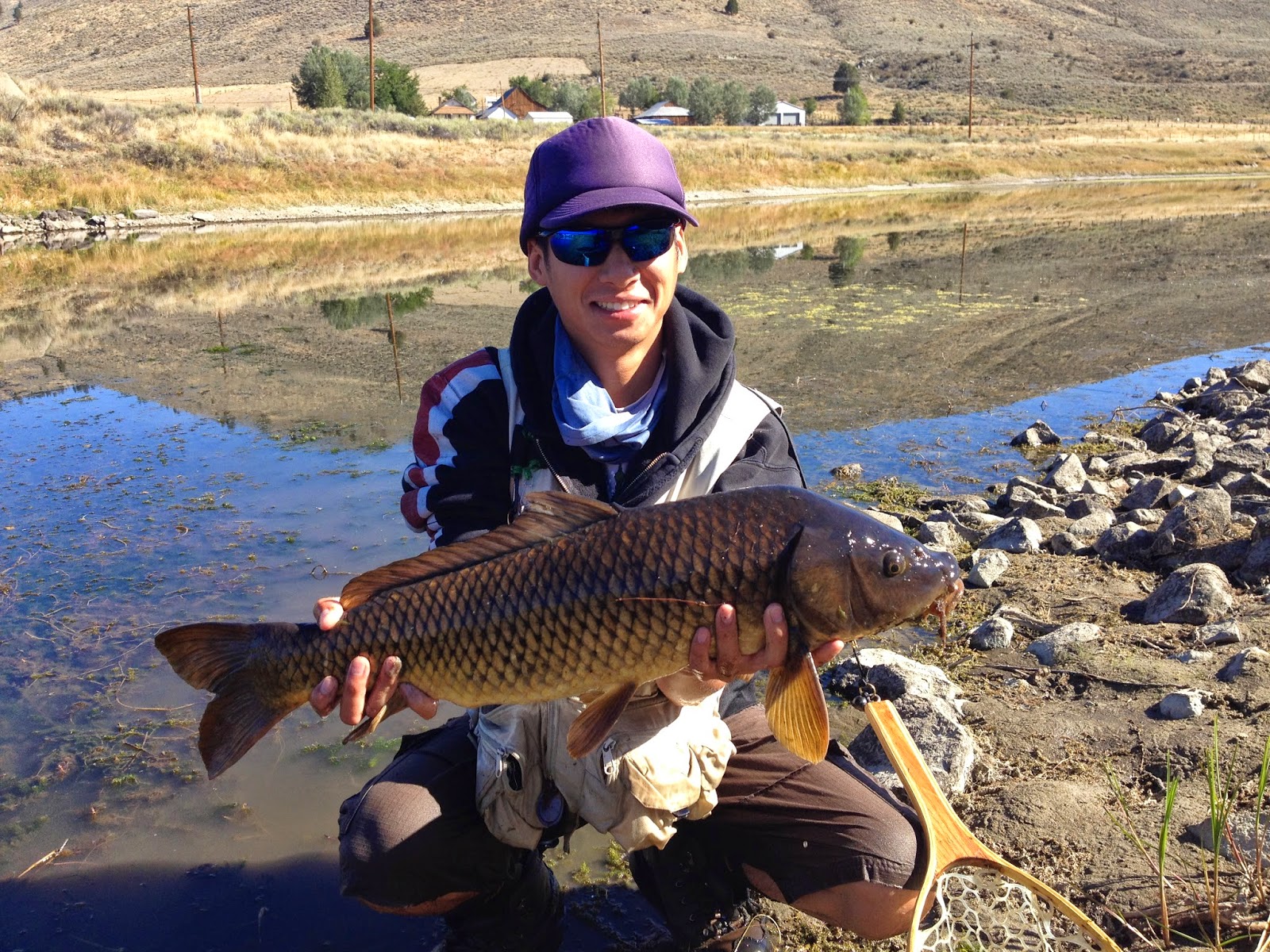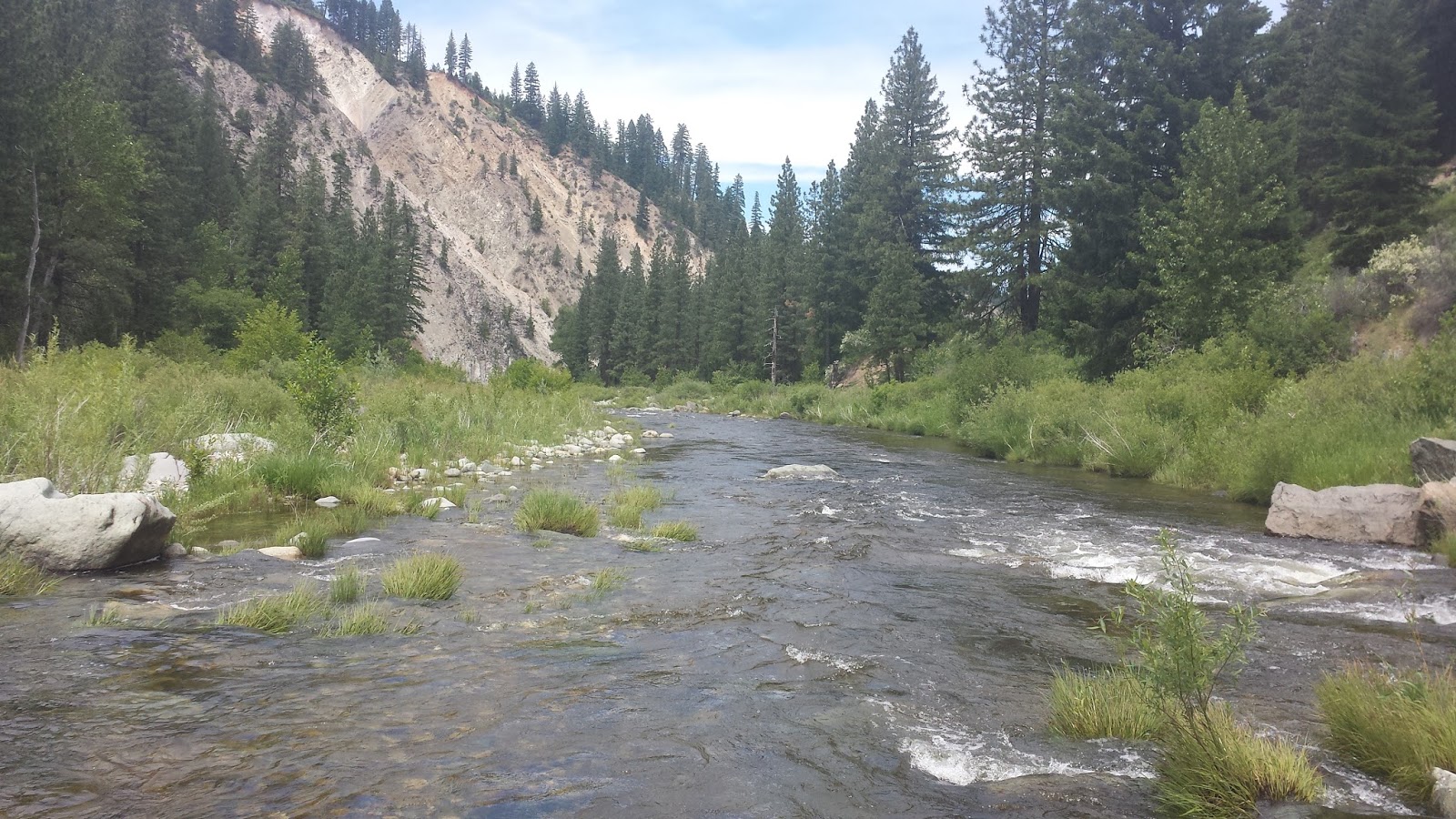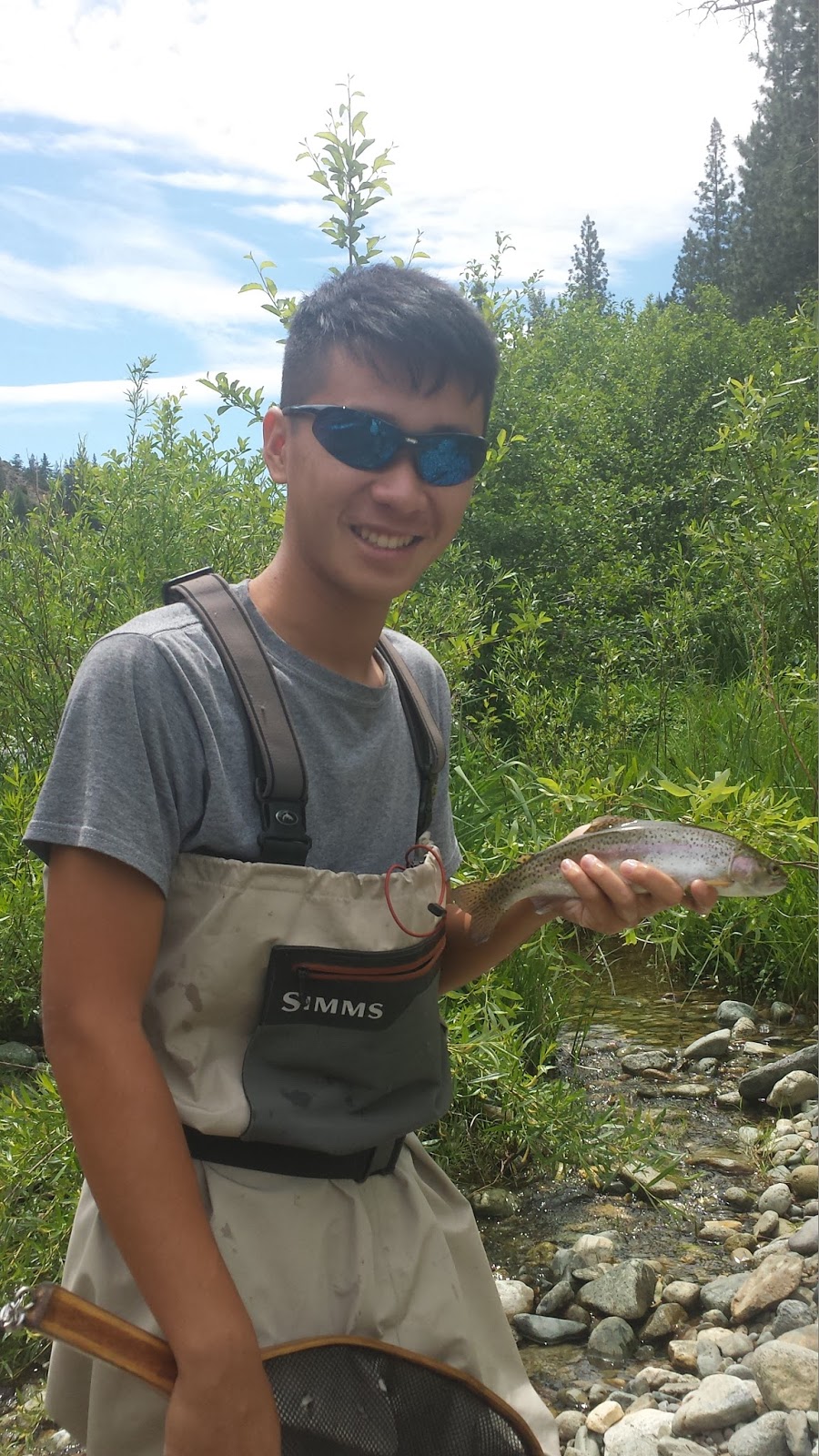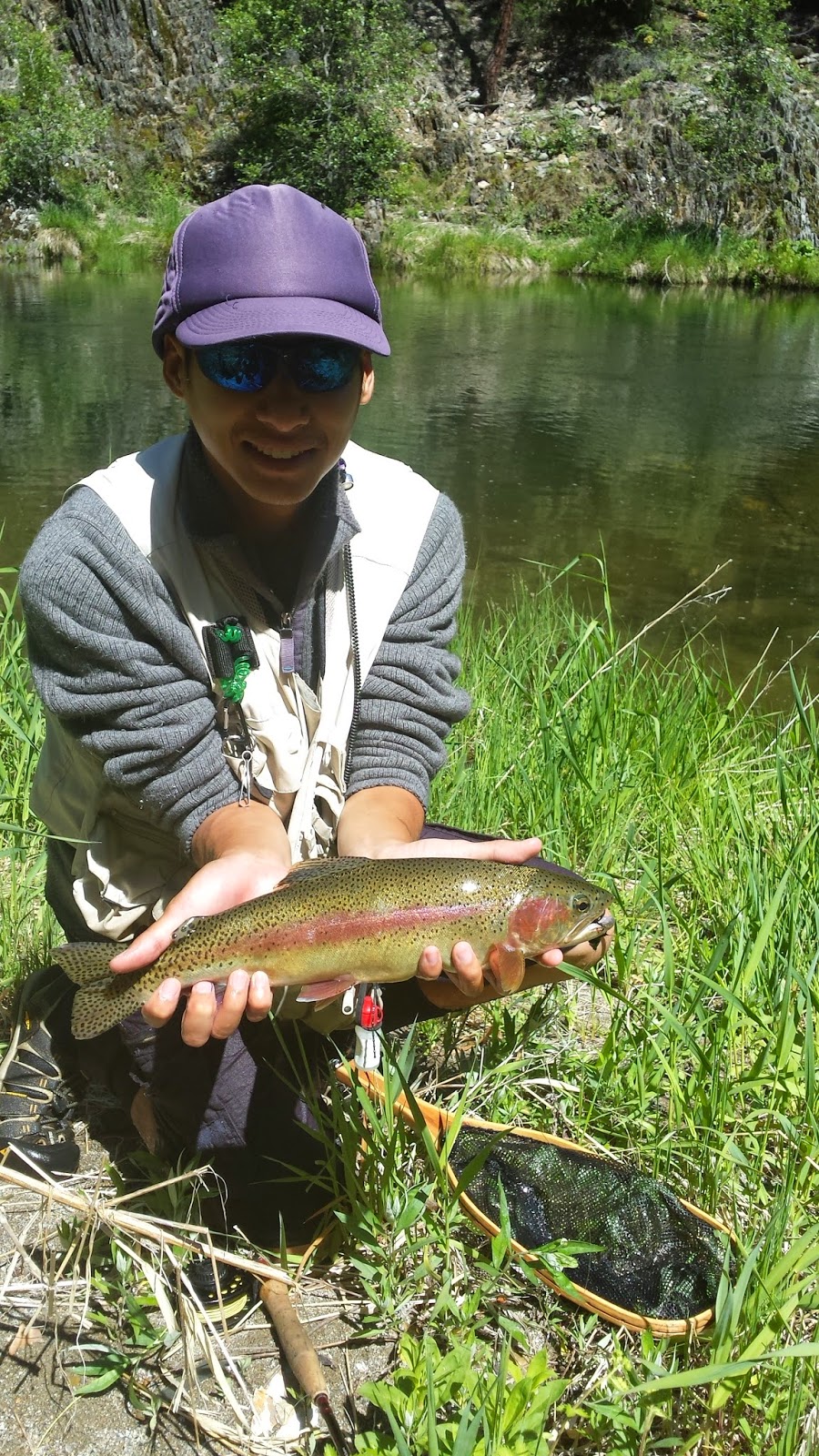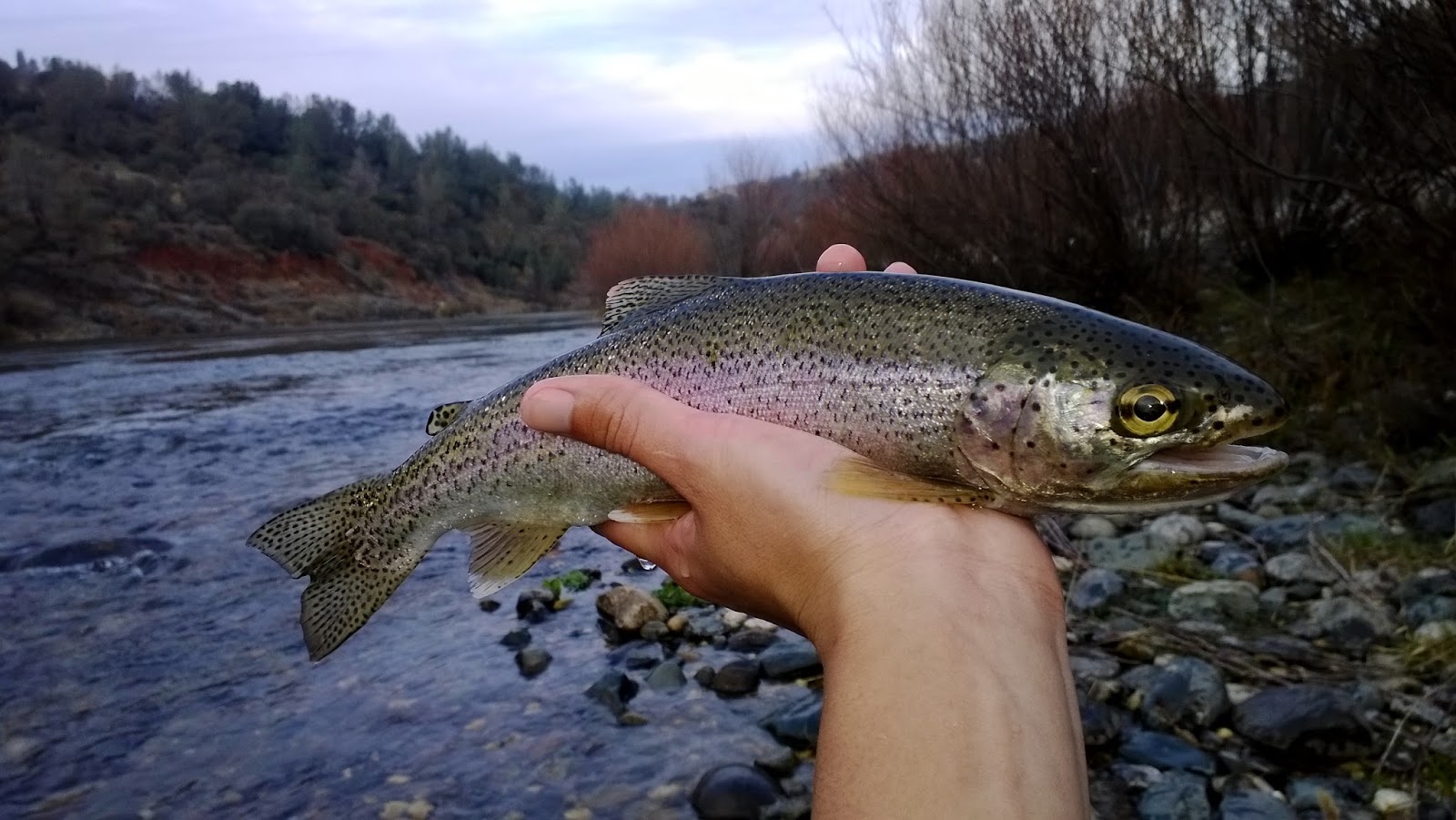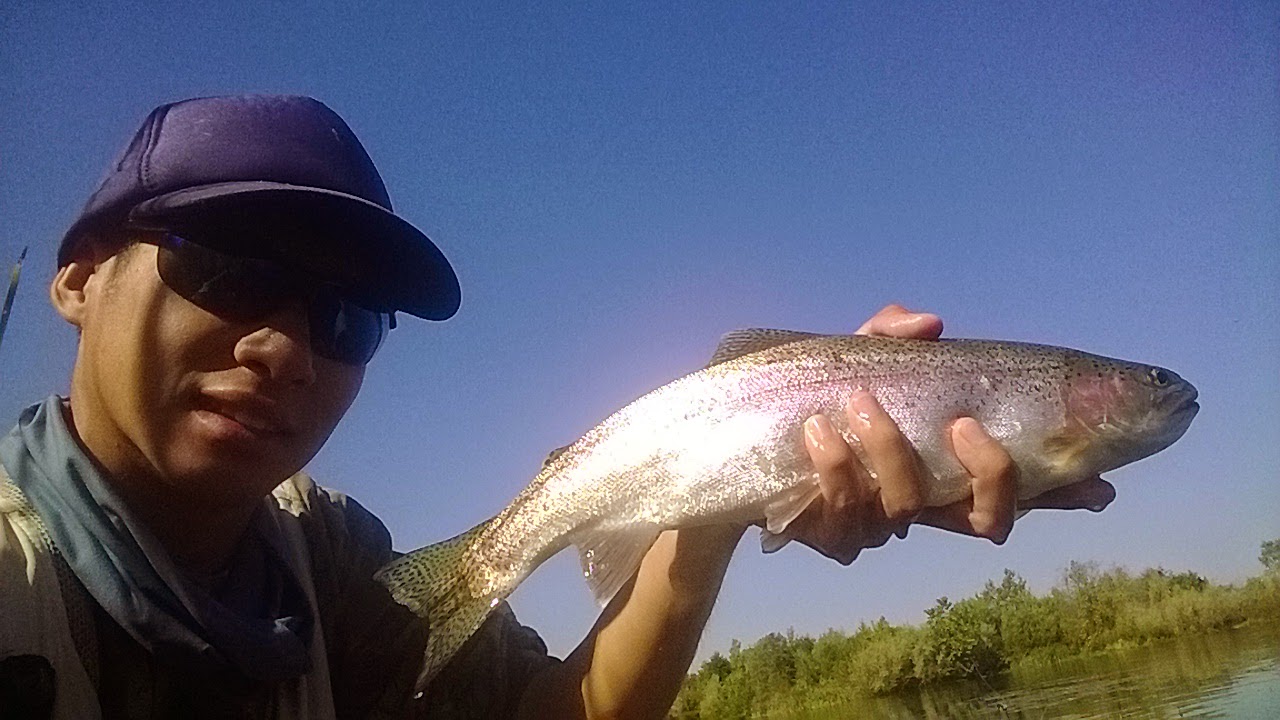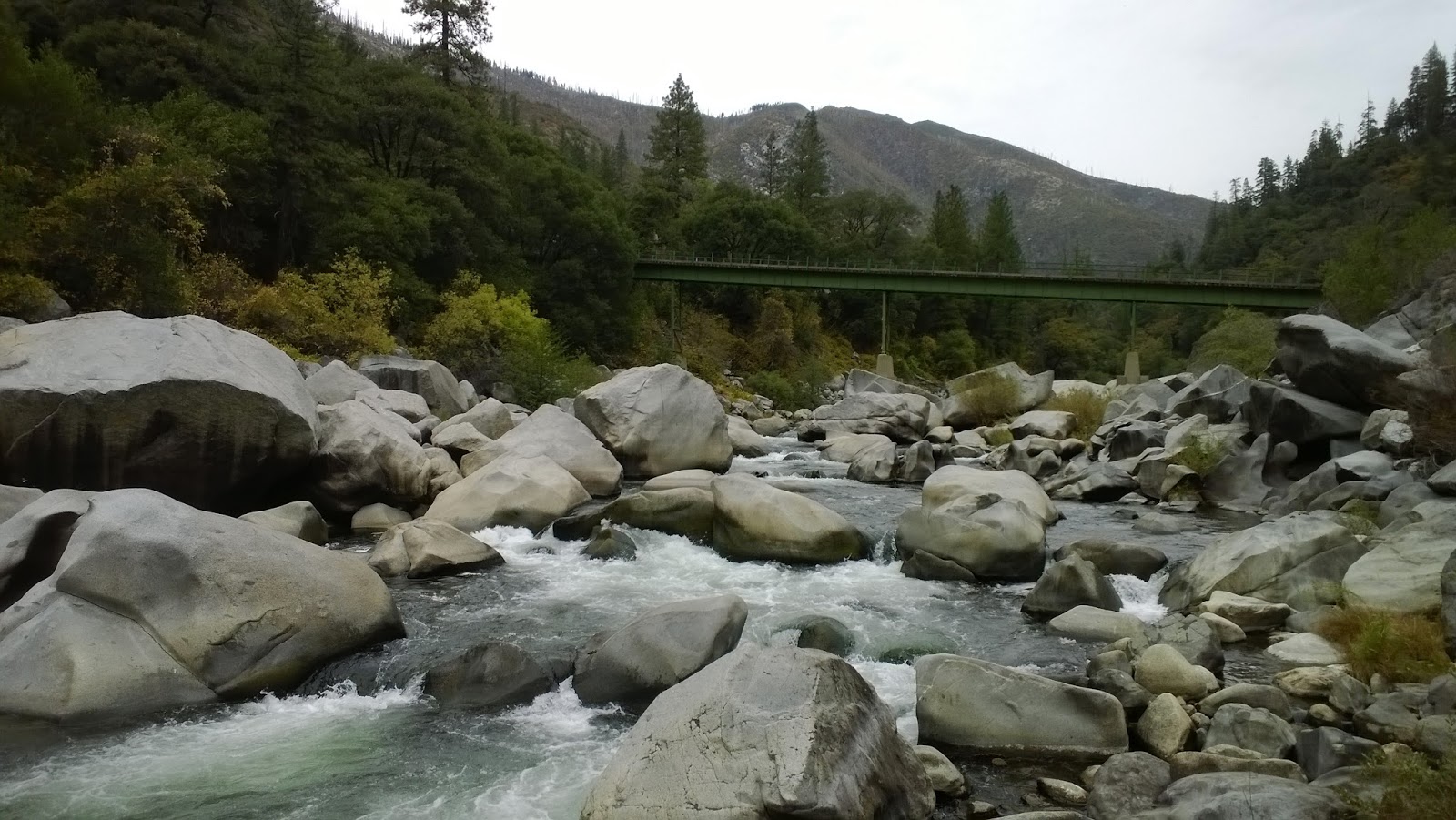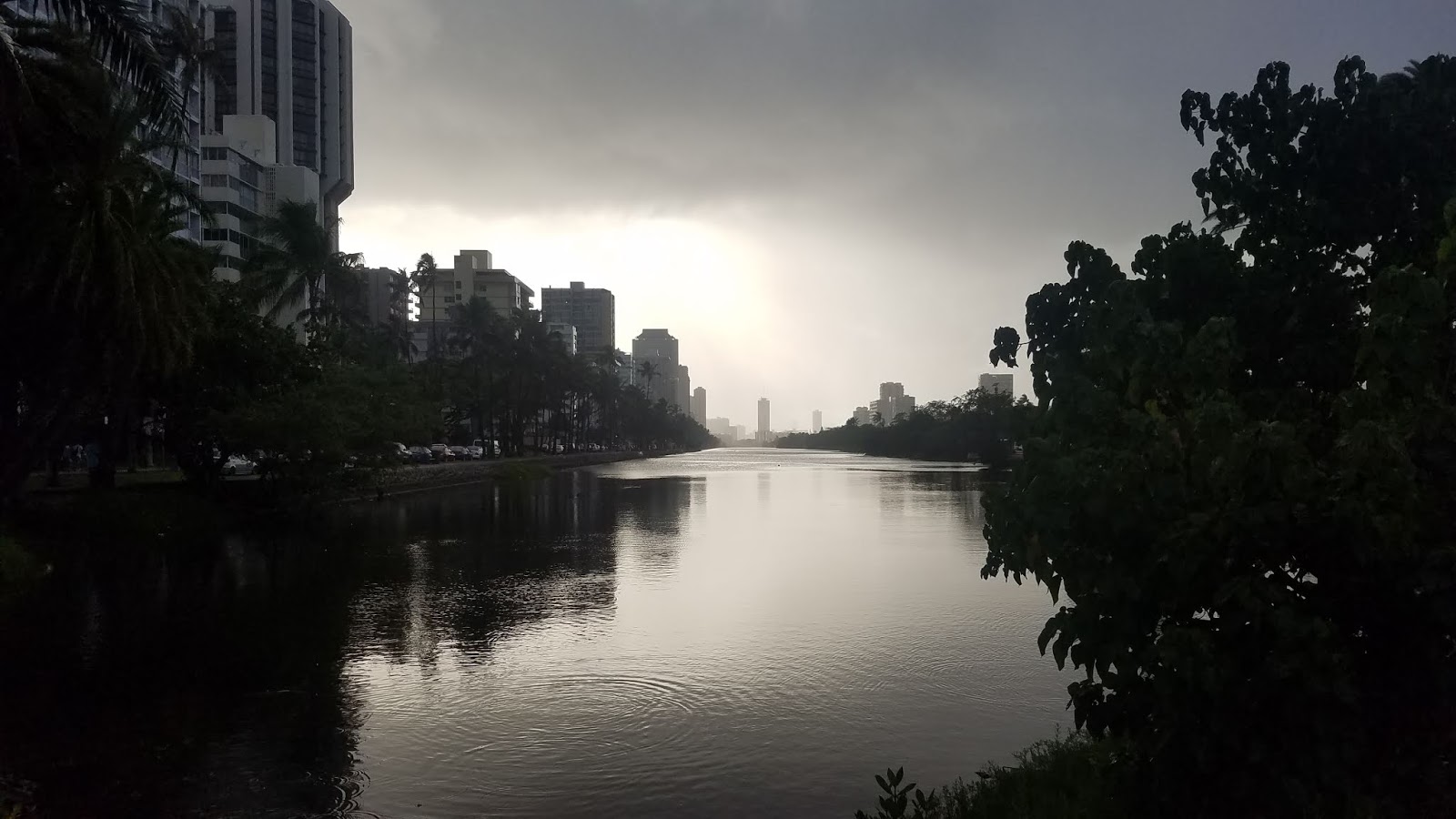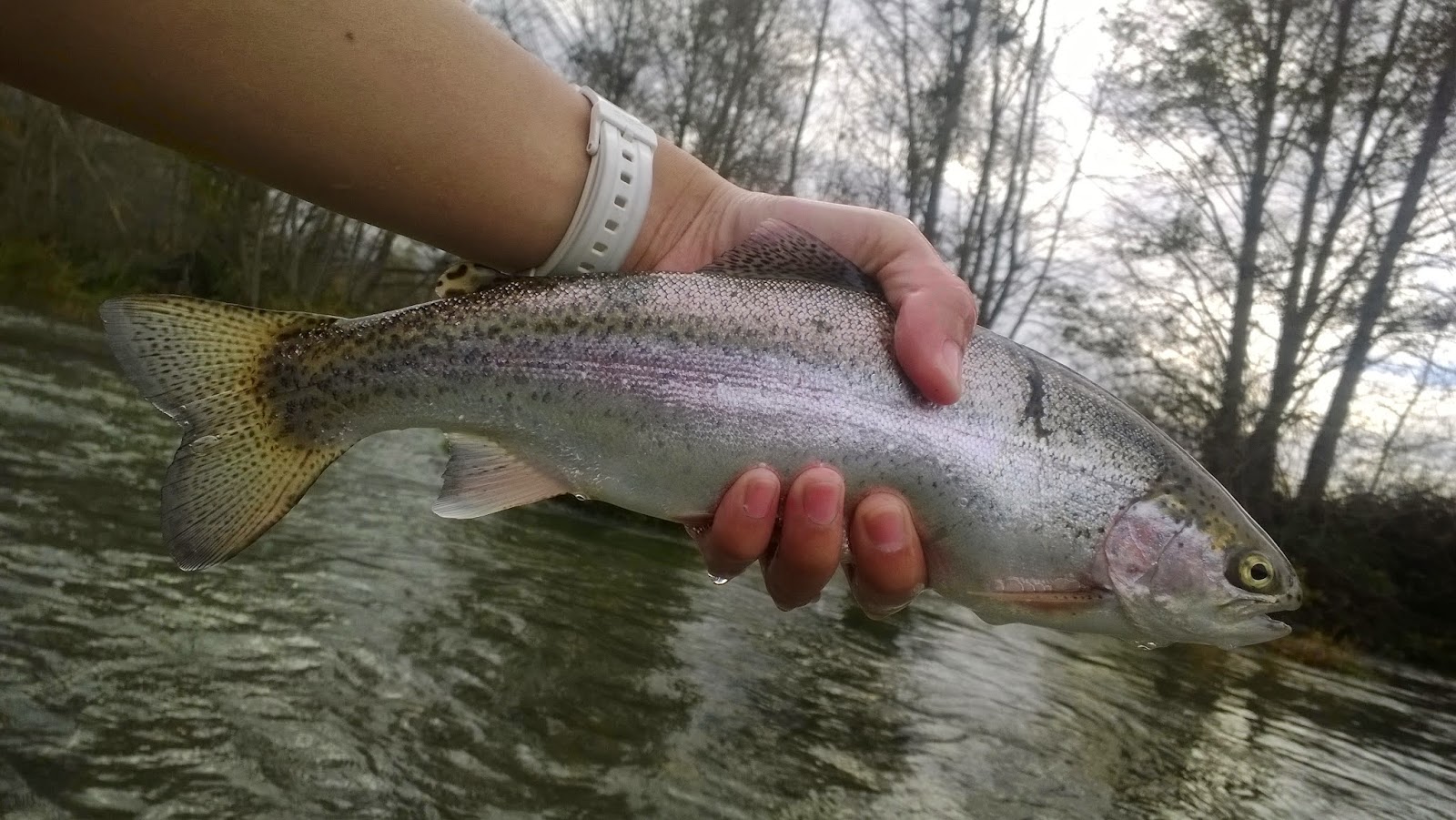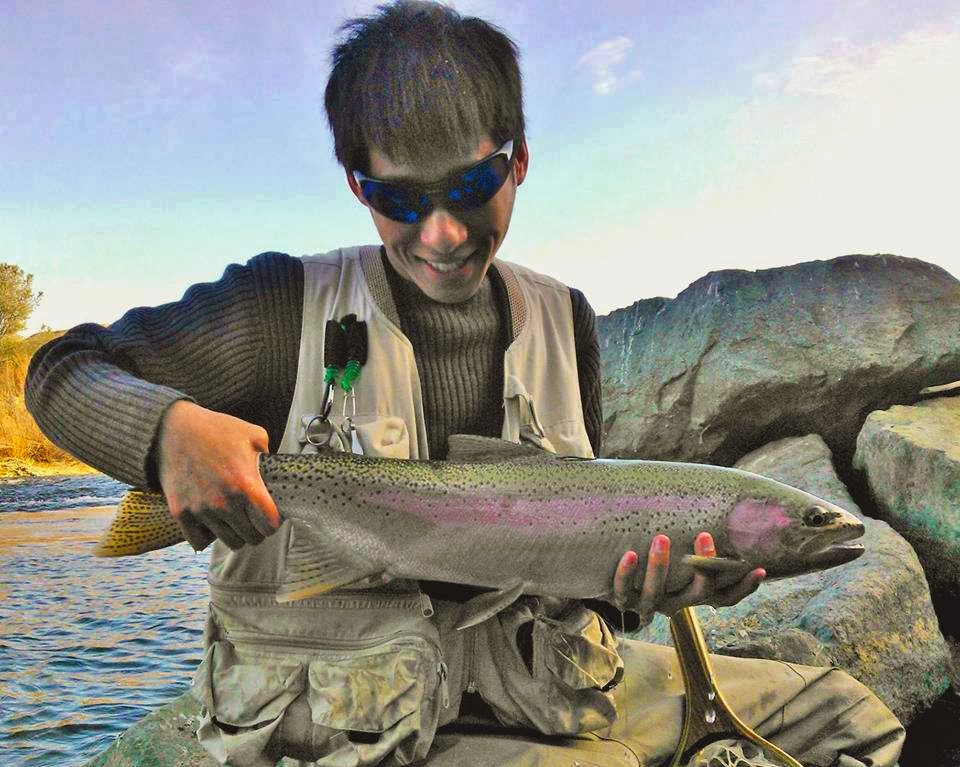Hat Creek is known as one of the best spring creeks in California. Originating from its headwaters near Mt. Lassen, this creek flows downwards through rugged terrain, meadow valleys, and several campgrounds before reaching Baum Lake. Baum Lake diverts the creek into two flows: one flow directed into the famous Powerhouse #2 and the other below Baum Lake’s dam. Both flows eventually merge below Powerhouse #2.
The upper section of Hat Creek is primarily a freestone put-and-take fishery that is known for its large brook trout that are stocked by DFG during trout season.
The lower section below Powerhouse #2 is a spring creek wild trophy trout section that is known for its wild well-educated brown and rainbow trout.
Hat Creek has a long and interesting history. Officially recognized as California’s first wild trout water, Hat Creek was a world class fly fishing destination in the 1970’s. The creek has since declined due to a sediment plug burying a majority of the creek’s aquatic plant life as well as invasive muskrats which have contributed to eroding the banks making the creek wider and shallower over the past few decades. Caltrout, Trout Unlimited, and many other agencies have recently come together to work on restoring lower Hat Creek back to its former glory.
Although Hat Creek is recognized as past its prime it continues to offer the challenge of spring creek fly fishing. It is one of the few spring creeks in California where you can freely stalk your target and watch as they ignore every single fly you throw at them.
Open Season
A) From Lake Britton upstream to Baum Lake, exclusive of the concrete Hat No. 2 intake canal between Baum Lake and the Hat No. 2 Powerhouse.
Open all year
*Only artificial lures with barbless hooks
*Zero limit. Catch-and-release only.
B) Baum Lake to headwaters
Open from the last Saturday in April – November 15th
*No restrictions. Five fish limit.
November 16th – Preceding last Saturday of April
*Only artificial lures with barbless hooks
*Zero fish limit. Catch-and-release only.
Access Points
Both upper and lower Hat Creek are easily accessible as HWY 89 parallels most of the creek up to Cassel.
Primary access points to upper Hat Creek are in and around the numerous campgrounds near the creek.
Hat Creek campground is one of Hat Creek’s first campground. It is south of Old Station closer to Mt Lassen making it a bit more scenic than the other campgrounds.
Cave Campground is the first campground north of Old Station. Across from this campground you can find entry to the Subway Cave which is an ancient lava tube.
Rocky Campground is the second campground heading north. It is a nice spot to fish with plenty of holding areas for fish.
Bridge Campground is perhaps the most popular campground and is the third campground further north. This campground is probably the best out of all the campgrounds and has a nice bridge that overlooks Hat Creek.
Honn Campground is the fourth and final campground north of Hat Creek. It is right off the HWY and is less developed than the other campgrounds.
In between upper and lower Hat Creek is Baum Lake. There is no overnight camping at Baum Lake however you can find plenty of campsites near the lake at Cassel Campground.
Lower Hat Creek begins at Powerhouse #2. There is a maintained road that leads you down into lower Hat Creek that ends at the Powerhouse #2 parking lot.
You can also access lower Hat Creek at Hat Creek park. The creek is deeper in this section making it difficult to fish from the bank.
The furthest access to lower Hat Creek is off a forest road downstream from Hat Creek park.
Seasons
Spring
| The season on Hat Creek always starts off well as the creek is spring-fed and generally not affected by the spring run-off. There are many different insects that can be hatching during this time of year and each year presents a different prolific hatch therefore having multiple different types of imitations is a good choice. The most common patterns that you should always have on Hat Creek are PMDs and BWOs patterns ranging from size 14 -20. I usually find the strongest hatch mid-morning and in the evening about an hour before sunset. As the weather warms in May the Salmonfly hatch begins giving you an opportunity to throw big stonefly patterns. |
Summer
| Dry fly fishing on Hat Creek in the early summer continues to be best during mid-mornings and evenings. Must have fly patterns to bring in the summer are caddis, trico, and yellow sally patterns in size 14 – 18. June will bring about the Green Drake hatch allowing you to again throw big patterns to rising fish. This hatch and be a hit or miss and will usually take place in the evening. Mid-day on Hat Creek is best fished with a hopper dropper. I like to sight fish for fish that hang out near the bank during the mid-day slump in the spring creek section or go down to the riffle section and look for fish with a euronymphing set-up. |
Fall
| Hat Creek tends to fish exceptionally well in the fall. Fishing pressure is pretty much nonexistent giving you tranquil access to the entire creek. The caddis hatch will still be around with less and less activity happening each day as the temperatures gradually drop. The trico hatch is one of the better hatches and can be caught in the early in the morning. Fish can be found sipping spinners along the edge of the bank and undercuts. The October Caddis hatch happens in October giving you one last opportunity to fish big patterns. BWOs start becoming a prominent hatch as the weather cools. Overcast days tend to bring out the strongest hatches. |
Fish Species
Rainbow Trout
Brown Trout
Brook Trout
Gear
3WT or 4WT for upper section
5WT for lower section
5x, 6x, 7x leaders for spring creek section
Fly Patterns
- Nymphs
- Pheasant tail
- S&M nymph
- Copper john
- Prince nymph
- Zebra midge
- Rubber leg stone
- Hare’s ear
- Lance’s X-May
- Wet flies
- Soft hackle
- Bird’s nest
- Dry flies
- Adams
- Sparkle dun
- Comparadun
- CDC dun (PMD & BWO)
- Quigley cripple (PMD & BWO)
- Hackle stacker emerger (PMD & BWO)
- Trico spinner
- Yellow sally dries
- Foam salmonfly
- EH caddis
- EC caddis
- X caddis
- Morrish October caddis emerger
- Morrish October caddis stimulator
- Spring-creek hopper
- Morrish hopper
Technique
Upper Hat Creek
The upper section of Hat Creek is primarily a freestone fishery made up of riffles, runs, and pools. This area is affected by the spring-run off therefore flows for fishing aren’t ideal until about June. Upper Hat Creek is narrower than the lower section making a shorter 3WT or 4WT rod a better choice.
With plenty of places for fish to hold this section is much easier to fish than the lower section. All techniques work well here so it’s just up to you to choose what you want to do.
Lower Hat Creek
The lower section of Hat Creek is a spring creek fishery that offers one of fly fishing’s greatest challenges. Stalk, cast, and pray.
Dry fly fishing usually takes place mid-morning or in the evening. Although hatches can happen sporadically throughout the day you’ll have the best chances of fooling fish during low-light periods.
These fish are incredibly difficult to target when they are feeding on top as they tend to key in on both specific stages and different species that are hatching all at the same time.
Bring several different flies and their respective stages. I have found that downsizing the pattern that the fish have been refusing can work well. Use 12ft long leaders with light tippets. I’ve gotten away with 5x but have done much better on 6x.
Sometimes the perfect drift is not enough. Try twitching your dry to get the fish you are targeting to react. This technique is well-known on Hat Creek and the Fall River as the Fall River twitch.
Nymphing can also be done in the spring creek section although the majority of the fish you’ll be catching tend be on the smaller size 4″ – 8″.
The best way to nymph Lower Hat Creek is with a hopper dropper rig. I prefer a hopper over an indicator because it spooks less fish and is another fly a fish could potentially take. Most of the creek isn’t very deep however the gradient can change quickly. I sometimes find myself adding a small splitshot like a #4 or #6 in-between my hopper and dropper to help my dropper sink faster.
I’ve had good results euronymphing the lower riffle section by covering water particularly the seams and buckets. The fish in the riffle section like to hold in the softer deeper water.
Takes will often be super subtle so pay close attention to how your indicator or line moves.
Powerhouse #2 Riffle is the most popular spot on Lower Hat Creek as it is the only riffle in the spring creek section. This is where I see 90% of anglers fishing when I’m visiting the creek. The riffle is shallow only about ankle to waist deep and receives tons of fishing pressure. Further downstream from PH riffle you can find spots that are less fished and worth a try such as Carbon Flats, Teal Island, HWY 299 bridge, and Lake Britton weir.
If you decide to pay Hat Creek a visit make sure you bring some mosquito repellant if you are fishing the evening hatch. There are always a ton of them out there in the evening and fighting them all the way back to the car is not fun.
The average Hat Creek trout ranges from 8” – 12” and anything over that is uncommon. I’ve caught some nice +18″ fish out there but it took a lot of blood, sweat, tears, and time to find them. These Hat Creek trout are wild, educated, hard fighting, and any success hooking one deserves a job well-done.

